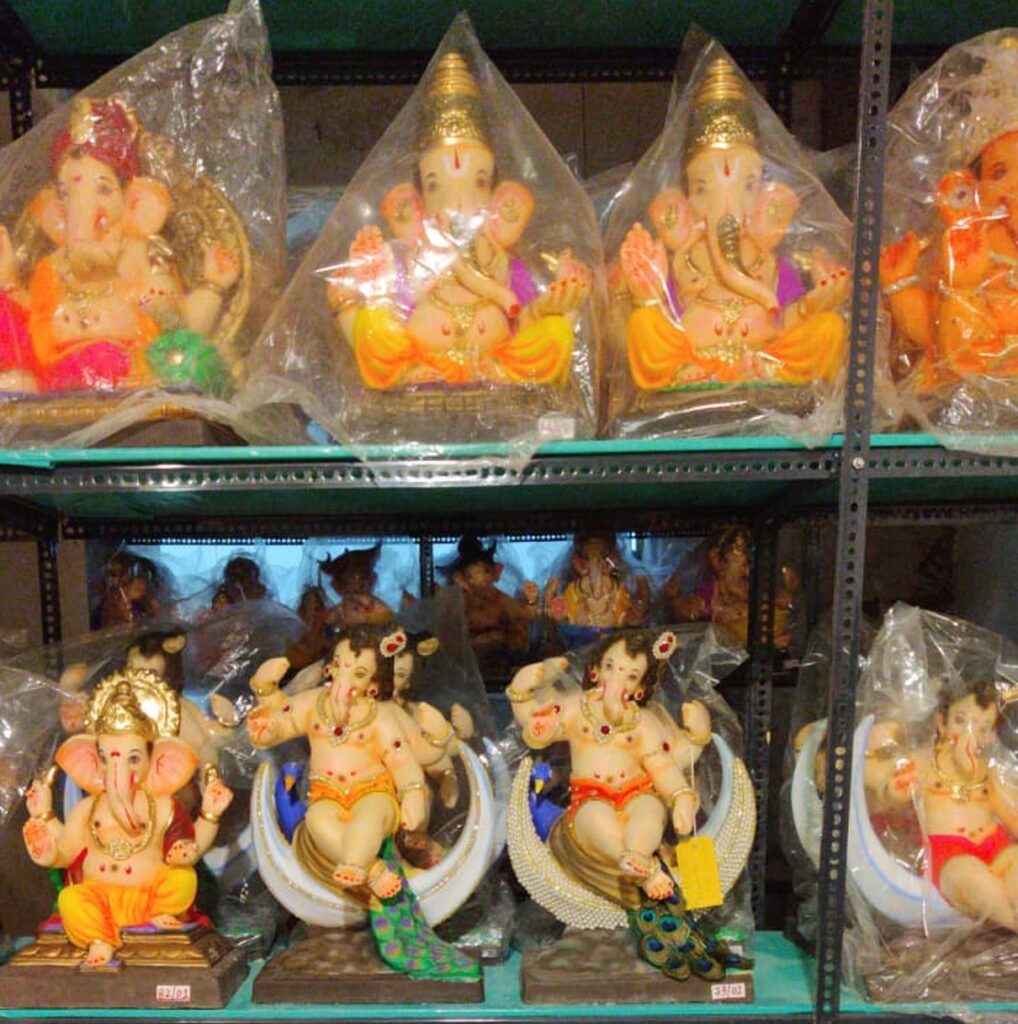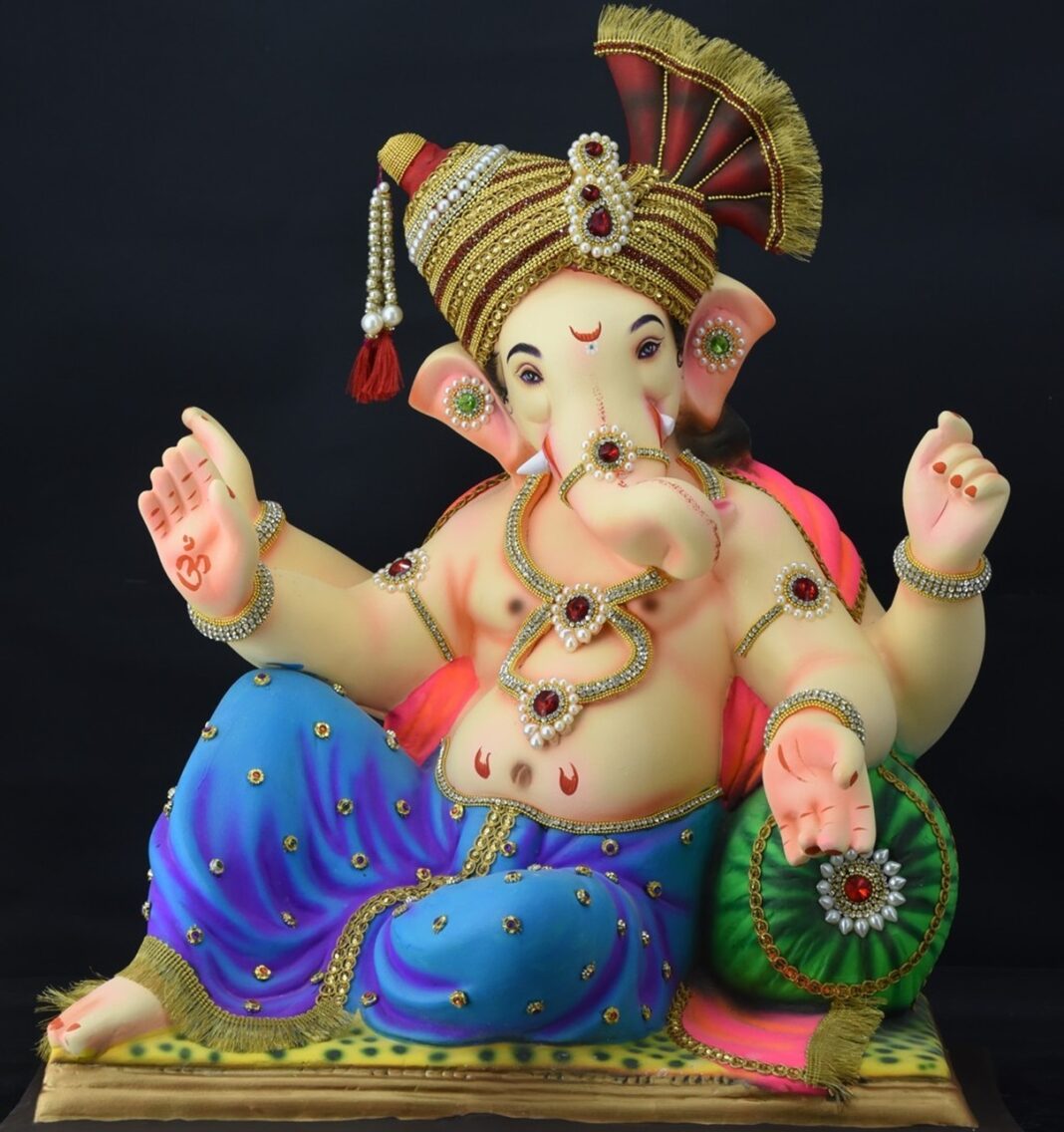INDIA. Mumbai, Maharashtra. The 11-day long Hindu festival of Ganeshotsav, honoring the elephant-headed Hindu god, will be celebrated between 22 Aug. and 1 Sept. this year. The festival has prayers, functions, songs, and celebrations throughout Maharashtra including Mumbai. The festival dates back to 1893 when Lokmanya Bal Gangadhar Tilak made it a public event to unite people and raise their voices against the British rule of India. Since then, the festival has become one of the most important events of Maharashtra, including Mumbai and Pune. It´s also celebrated in other states such as Tamil Nadu, Karnataka, Andhra Pradesh, and Goa. The celebration is not restricted to Hindus alone but spreads to other communities who wholeheartedly unite in the festivities.
Ganesh is an Aaradhya devata
Lord Ganesh (Vinayaka) is considered the Aaraadhya devata, which means an adorable god who removes obstacles while granting boons and good fortune. Lord Ganesh is the second son of Lord Shiva and his consort, the Goddess Parvati.
Origins of the tradition
The Ganeshotsav is a 200-year-old tradition of Ganesh idol worship that is passed down from generation to generation in households. The Ganesh idol is placed on an altar following a ceremony comprising pooja and Vedic mantra recitations. A priest presides over the recitation of Vedic texts and sacred incantations. Some offerings are made twice a day to the Lord by devotees with songs, bhajans, and other devotional practices. Small-sized Ganesh idols have always been placed within the homes of devotees.
The custom of installing life-size Ganesh idols at huge podiums began in the year 1893 and became a prominent feature in Mumbai and Maharashtra. The Ganesh podiums are decorated by a group of people from close-knit communities. During Ganeshostav, devotees come together in large numbers to have the darshan of Lord Ganesh and to participate in the festivities. The magnificent celebration of Ganeshotsav is the most memorable ritual in India.
The new dimension.
As a consequence of the ongoing COVID-19 pandemic, numerous restrictions are now imposed per the directives of the Maharashtra government. These mandates include social distancing, wearing masks in public places, and other related precautions to avoid the spread of infection. For the first time in the history of Maharashtra, the size of the idols have been reduced. The household Ganesh will be two feet tall, while the public podiums will have to install idols of four feet in height.
Environmental concerns
Since 2014, a new awareness has dawned among people concerning the environmental aspects of the festival. There is a movement to install clay idols instead of ones made from plaster of paris, which isn´t bio-degradable. There is also the recently developed concept of making the idols from paper mache. These innovations amongst the devotees have added a new flavor to the celebrations, with each household attempting to maintain an ecological balance.
Devotees’ dilemma due to the lockdown
The festival is celebrated in the month of Bhadrapada, as per the Hindu almanac. Mumbai devotee Maulik Dixit told Transcontinental Times, “I was contemplating installing the Ganesh idol in the month of Magh (Jan./Feb.) instead of Bhadrapada (Aug./Sept.), due to the pandemic. I changed my plans considering the vendors would have probably made the figures and would have incurred expenses. In 2020, I’ll seek the blessings of the Lord, for the pandemic to wane.”
Challenges for the idol makers
The figures were ready by April, but the idol makers found themselves in a dilemma. They were anxious about whether the idols would be sold because of the pandemic. Despite this, they remained invested in a sizable amount and prepared for the celebration.
Amruta and Rohit Vaste of the business Paper Ganesh (paperganesh.com) told Transcontinental Times that they normally deliver Ganesh idols to homes, but this year are adding additional costs for transportation. The delivery costs are now virtually half the price of the idols, particularly for small ones.
The economic activity has also taken a beating this year. The craftsmen painstakingly prepare the idols and depend on the festivals of Ganesh and Durga, which follows thereafter, for their livelihoods.

The blessings of Lord Ganesh
The idols worshipped at the podiums and in households are carefully taken in procession and are eventually immersed in the sea at South Mumbai Chowpatty, at Juhu, and Versova. However, there will be a change in the process this year. Special ponds will be constructed for the emmersion of the idols. Many household Ganpati’s will be emersed at home. This way the idol will remain close to the devotees and offer protection from obstacles in these difficult times.



